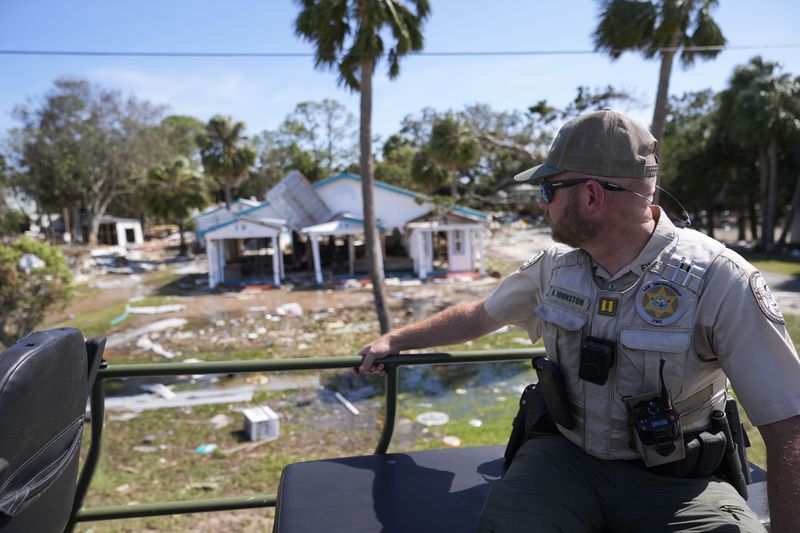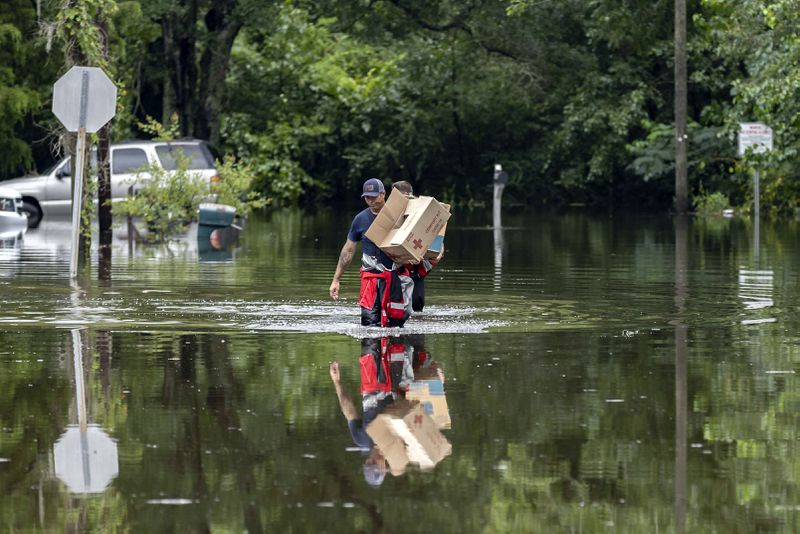Earlier last week, the tropical disturbance that became Hurricane Helene was a random cluster of thunderstorms off the coast of Cuba. Three days later, Helene exploded into a Category 4 hurricane packing winds of 140 mph as it headed toward Florida’s Gulf Coast.
The storm was the strongest ever recorded to hit Florida’s Big Bend region. It sustained its hurricane-force winds deep into Georgia and dropped record-breaking rainfall in parts of the state, including the Carolinas, Tennessee and Virginia, where flash floods wiped entire towns off the map.
The full extent of the devastation left behind by Helene is yet to be determined, but the storm already ranks as one of the most destructive in US history. More than 160 people have been confirmed dead, while hundreds are still unaccounted for, as the perpetrators sort through the remains. Damage caused by the storm could be $160 billion, according to estimates from AccuWeather.
While the Atlantic Basin has produced hurricanes for millennia, Helene displayed characteristics that scientists say are becoming more common as human activity warms the planet.
Here’s what we know – and don’t know – about how climate change made Helene worse.
Rain storms
Global temperatures have increased by an average of 2 degrees since 1850 and scientists have known for decades that warm air holds more moisture, which causes rain storms. Experts say Helene’s extreme rainfall is one of the clearest signs of the influence of climate change.
Helene’s rainfall across much of the Southeast is unprecedented, at least as far as humans have been keeping track.
As of last Wednesday, Helene — along with the storm that hit Atlanta shortly before the main event — combined to drop more than 11 inches of rain on the metro area, the most on record in a 48-hour period.
As the storm moved over the southern Appalachian Mountains, changes in elevation caused more moisture to flow from the storm, breaking rainfall records in places like Asheville, North Carolina, and many other places.
Michael Wehner, a senior scientist at California’s Lawrence Berkeley National Laboratory, said he and his colleagues conducted a “climate change” analysis of the storm’s rainfall, seeking to determine how global warming contributed to the event. Their preliminary results show that total rainfall in parts of Georgia and the Carolinas is 20 times more likely due to human-caused global warming.
The authors estimate climate change “may have caused more than 50% more precipitation” in parts of Georgia, North Carolina and South Carolina, and perhaps greater responsibility for promoting the floods that fell in the most affected areas, but further analysis is needed.
The study has not been peer-reviewed, but similar methods have been used to study other major storms, such as hurricanes Harvey and Dorian.
“We’ve looked at this a lot and without exception, for major storms, we’ve found there is a strong human influence on rainfall,” Wehner said.
Increasing speed
As human activity warms the planet, most of the extra heat — about 90%, according to the National Oceanic and Atmospheric Administration — has been absorbed by the world’s oceans.
Ocean heat, meanwhile, is the main fuel for hurricanes and can allow storms to intensify quickly.
Figures show Hurricane Helene’s passage through the Gulf of Mexico as it slammed into Florida was the hottest on record for this time of year. And while scientists say it’s too early to say that climate change caused Helene to balloon from a Category 1 to a Category 4 storm before it made landfall, the storm’s speed increase is consistent with observed trends.
Credit: AP
Credit: AP
A 2022 study published in the peer-reviewed scientific journal Nature Communications found that the number of hurricanes has increased dramatically since the 1980s, and concluded that global warming is contributing.
“Although the timing of the increase is very difficult to predict, we know very well that it is linked to ocean temperatures,” said Kevin Reed, a professor in the School of Ocean and Atmospheric Sciences at Stony Brook University in New York.
High seas = Increased storm surge
Melting of the world’s glaciers and ice sheets due to human-caused warming is contributing to the rise in sea levels observed around the world.
Since the 1880s, global sea levels have risen by an average of 8 to 9 inches. In some areas, including along the US Gulf and Atlantic coasts, they are rising faster.
Credit: AP
Credit: AP
That rise in sea levels is causing more nuisance flooding during high tides, including in Georgia. But when major storms like Helene make landfall, those extra few inches allow storm surges to penetrate deeper, putting more property and lives at risk.
Along with inland flooding, storm surges are among the most dangerous and destructive effects of hurricanes. It’s still unclear how the water rose in places like Perry, Florida, near where Helene made landfall, but videos show the storm’s surge caused widespread flooding in many coastal towns.
More hurricanes?
Will ocean warming cause more hurricanes to hit the US? Maybe not.
According to the Fifth National Climate Assessment, the US government’s most comprehensive report on climate change and its impacts, there is no apparent trend in the frequency of hurricane landfalls in the US since the late 19th century. less evidence to support the idea that more storms will hit Georgia.
Still, there are other changes in hurricane behavior researchers are investigating, which could have an impact in Georgia.
Once land is cut off from their main fuel supply, hurricanes lose strength. But since the 1960s, some research has found storms don’t dissipate as quickly after landfall, allowing the effects to spread further inland.
Part of the reason Helene was so devastating was the storm moved so quickly over land, allowing it to maintain its strong winds as it moved around Georgia. But the storm’s sheer size — a Category 4 with a wind field spanning hundreds of miles — is perhaps the best explanation for why this storm was able to maintain speed over land, Reed said.
“The strongest storms are going to be able to stay at Category 1 or higher for a long time after landfall, so I think that’s the biggest factor in this event,” Reed said.
Credit: AP
Credit: AP
Other research has found an increasing number of storms are stalling immediately on the coast, which tends to increase rainfall and flood risks. Hurricane Debby, which hit the coast of Georgia and the Carolinas a few weeks ago, is one of the slowest movers to hit the United States recently.
Experts say the trends deserve further investigation, but it is too early to say the changes are caused by global warming.
Disclosure notice
This coverage is supported in partnership with the Green South Foundation and Journalism Funding Partners. You can learn more and support our weather report by contributing to ajc.com/donate/climate.
#climate #change #Hurricane #Helene #dangerous


